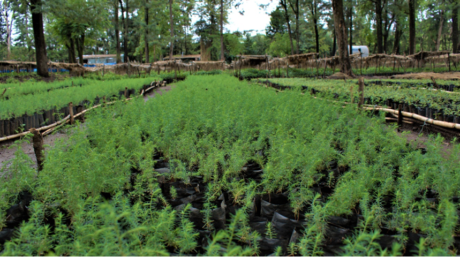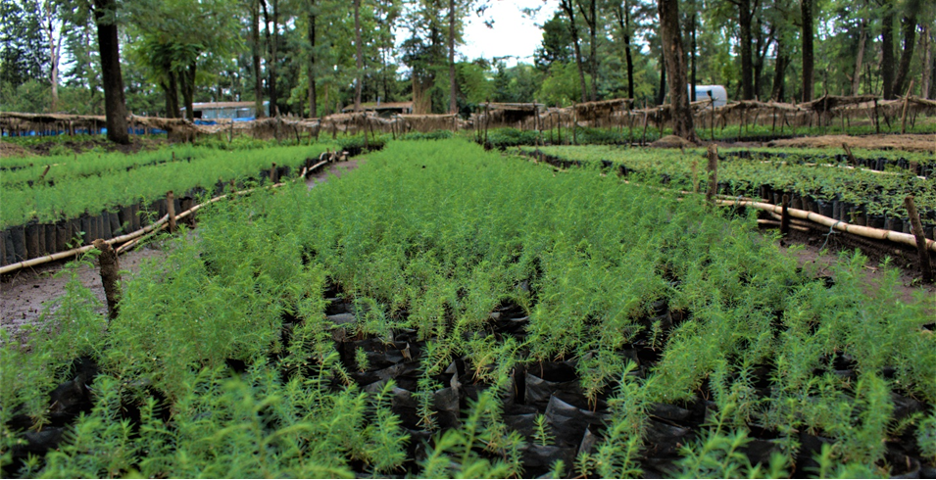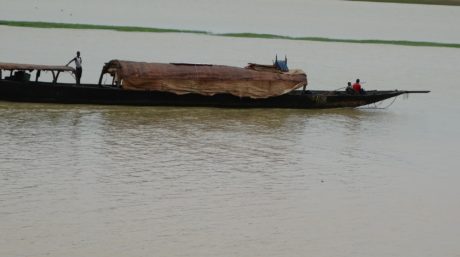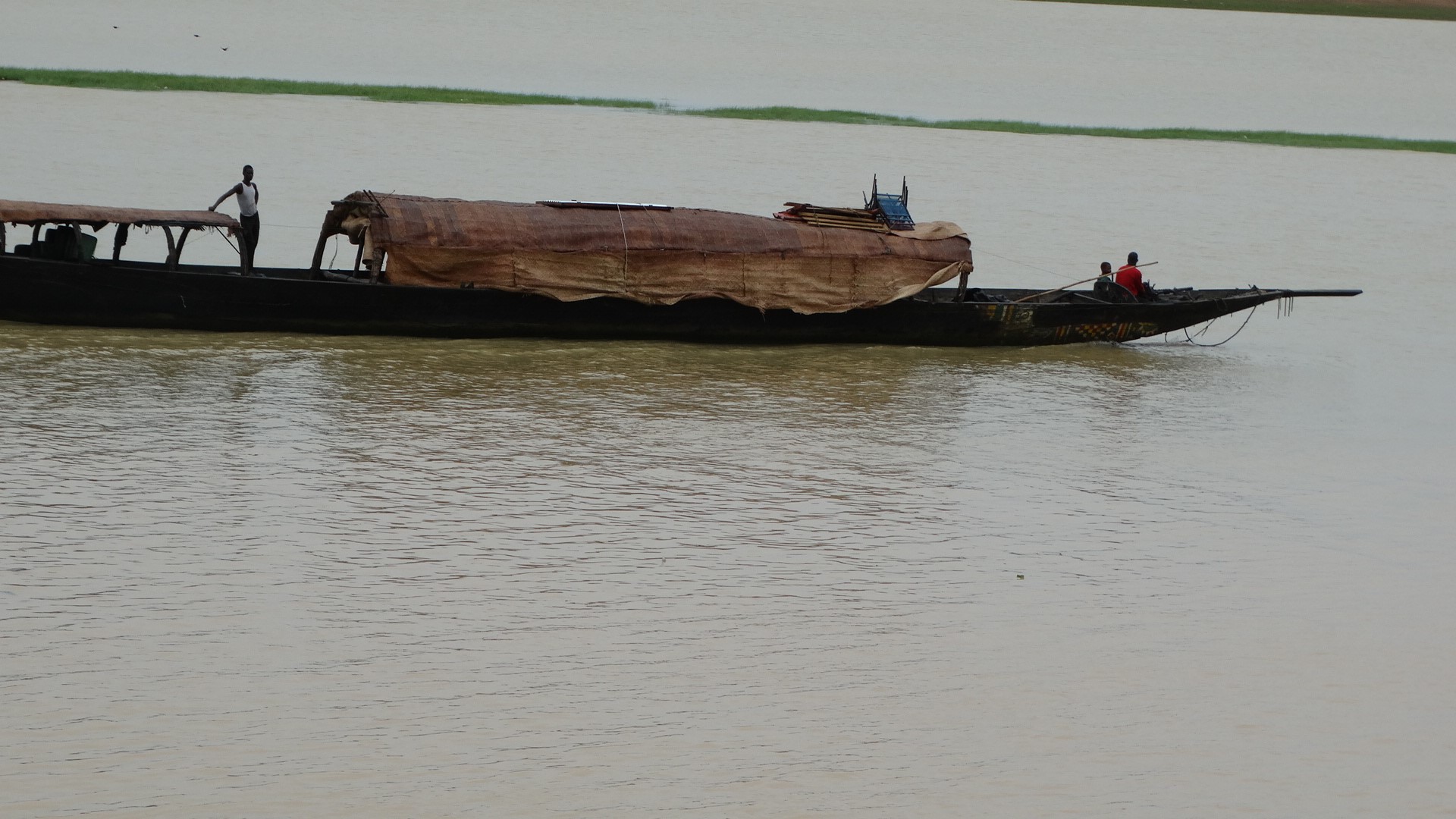Healing the Coastline: From Woven Hands to Living Shores
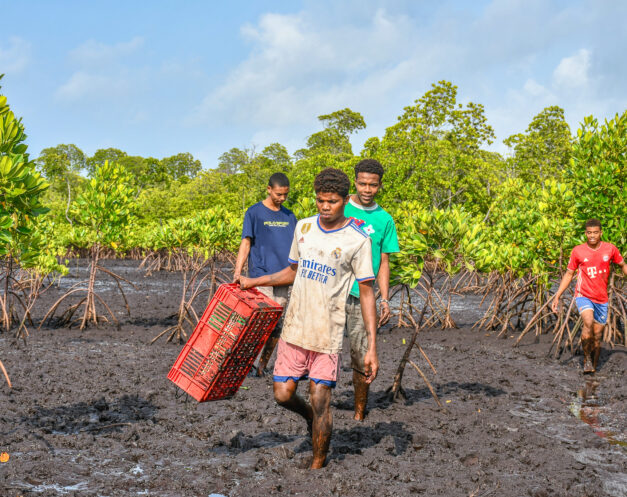
In the soft light of morning on Pate Island, groups of women set out toward the island’s terrestrial side. Their footsteps trace familiar paths through sandy tracks and mangrove creeks, leading to the stands of terrestrial plants whose stems and leaves will soon be transformed into something remarkable.
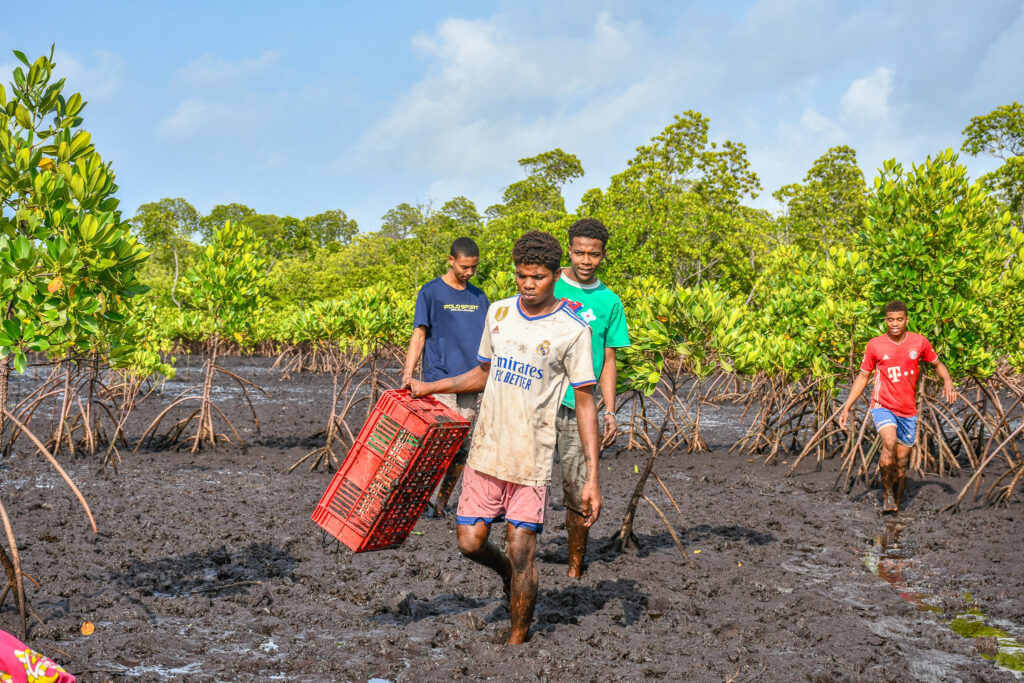
With skilled hands, they harvest the raw materials, bundle them, and make the long walk back to their villages. There, under shaded verandas, the rhythm of weaving begins. The women’s fingers move skilfully, crafting sturdy, breathable pots from the supple strands. Known as hapahapa, a Swahili word meaning “right here”, the name comes from Pate Island, one of Lamu’s archipelago, where the idea for this style of pot first took shape, hence the name hapahapa. Drawing from that inspiration, the Pate Resources and Tourism Initiative (PRATI) created their own eco-friendly version, designed as biodegradable cradles for young mangrove seedlings, each one carrying the promise of a forest yet to grow.
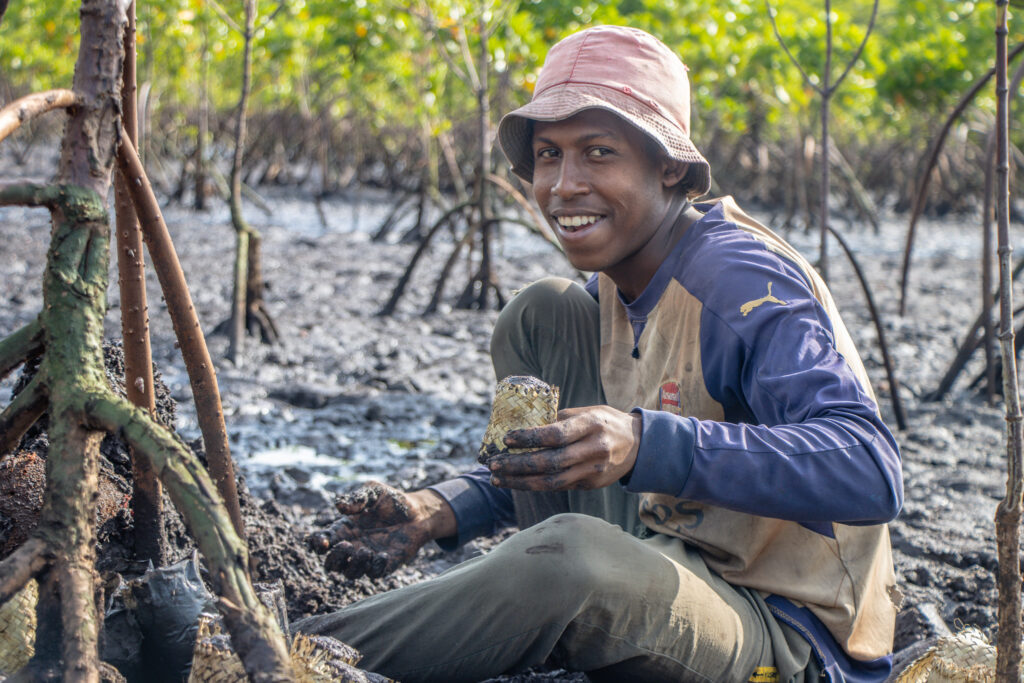
This craft is more than a livelihood. It is a link in a much larger effort to heal Kwabaguo, a coastal site on Pate Island where mangrove forests once stood dense and unbroken. Over decades, unsustainable practices had stripped the shoreline bare, threatening marine life, food security, and the community’s protection from storms. The Pate Resources and Tourism Initiative (PRATI) recognised the need for change and saw in the hapahapa pot an opportunity to restore both nature and livelihoods.
The Challenge: Mangrove Degradation
For generations, mangrove trees in Kwabaguo were cut and burned together with coral stone to produce limestone for house construction. While this practice provided essential building materials, it came at a steep cost. The destruction of these coastal forests weakened natural barriers against storms, reduced fish breeding grounds, and endangered the biodiversity that sustained the local economy.
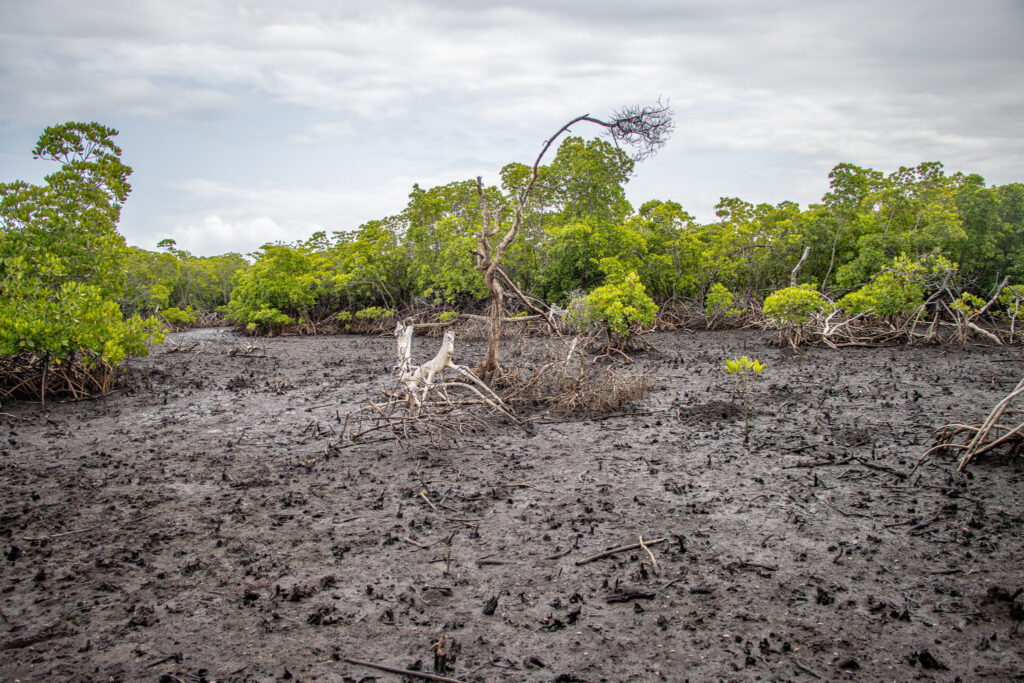
By the time PRATI began its work, the damage at Kwabaguo was severe. The coastline was exposed, marine life was in decline, and the community’s future was at risk.
The Restoration Effort
Recognising the urgent need for intervention, the Pate Resources and Tourism Initiative (PRATI) launched a comprehensive restoration programme at Kwabaguo, guided by Ecological Mangrove Restoration (EMR) principles. This approach goes beyond simple planting by first addressing the root causes of degradation and then restoring the conditions necessary for the ecosystem to thrive.
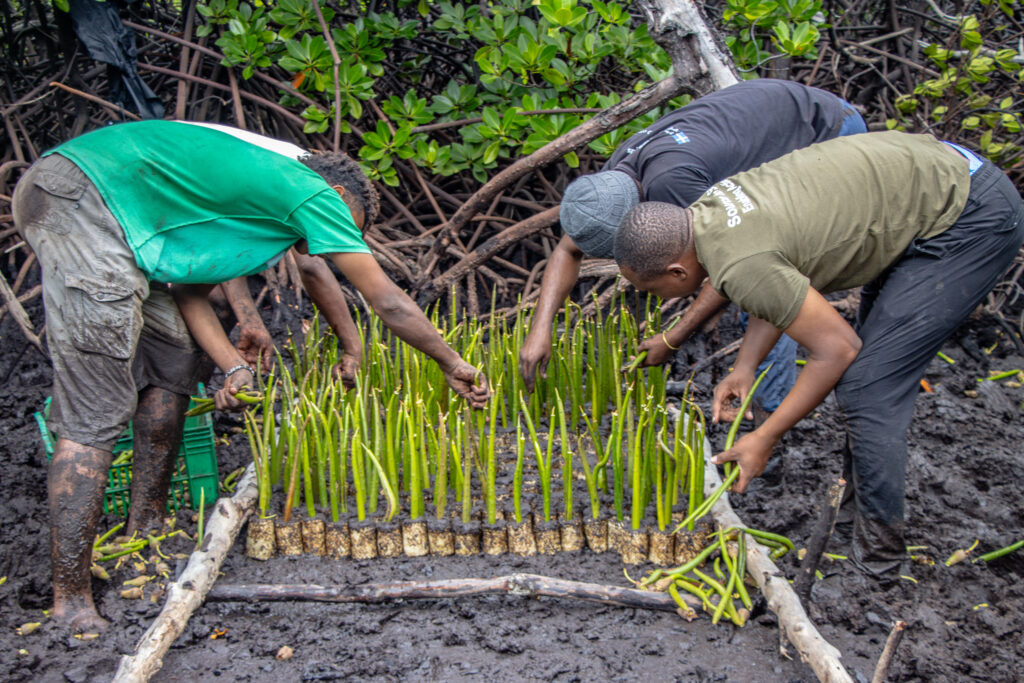
Kwabaguo’s degradation was the direct result of community members cutting down mangroves to burn together with stone in order to produce limestone for house construction. This practice not only removed the mangrove forest but also disrupted the site’s ecological balance, leaving the land barren and without the natural seed sources or suitable soil conditions required for natural regeneration.
Simply protecting the site would not have been enough to bring back the forest. PRATI therefore adopted assisted planting as an essential step to jumpstart recovery. By actively planting 5,000 mangrove propagules, they have successfully reintroduced the foundational species needed to rebuild the forest. This achievement demonstrates the viability and positive impact of a dedicated, EMR-based approach. Building on this momentum, PRATI is now establishing a nursery with capacity for an additional 5,000 seedlings in preparation for future large-scale planting.
Innovation: The Hapahapa Pot Initiative
One of the most significant innovations in the Kwabaguo restoration project is the introduction of hapahapa pots for seedling cultivation, replacing traditional plastic bags. This idea grew from the understanding that, while plastic bags are inexpensive, they are not environmentally sustainable and can restrict the natural growth process during transplantation.
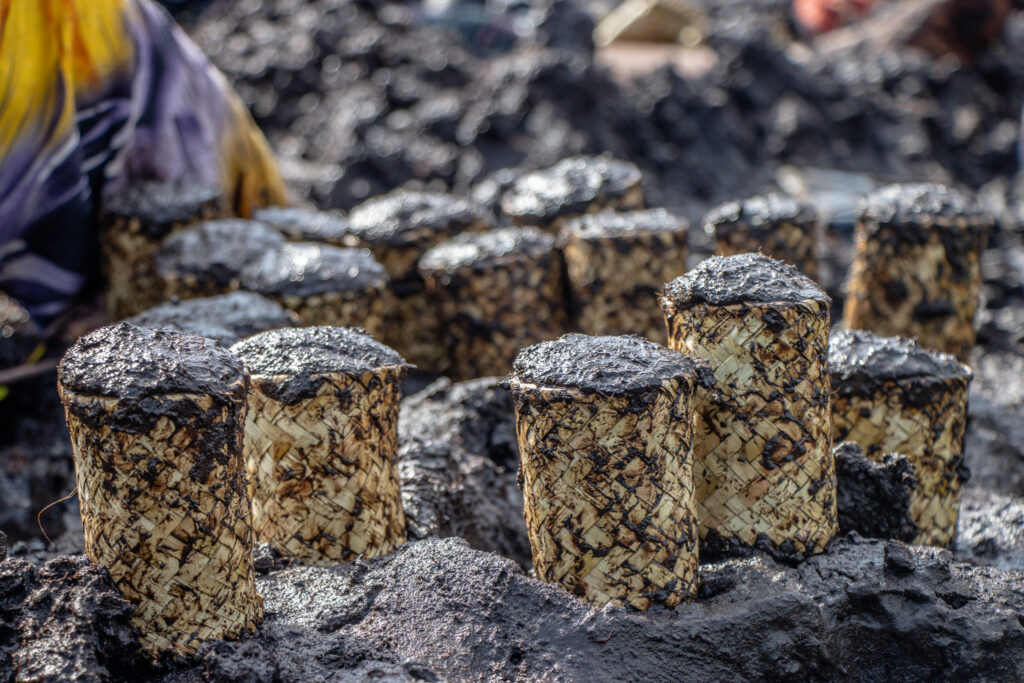
Hapahapa pots are woven from natural, biodegradable materials and offer distinct advantages:
- Natural decomposition: Unlike plastic, these pots break down naturally in the soil while releasing nutrients, enhancing mangrove growth and removing the need for manual removal during planting.
- Accelerated growth: Seedlings in hapahapa pots have shown faster growth rates, likely due to better aeration and root development as the pot integrates with the soil.
- Environmental sustainability: Their natural composition aligns with long-term ecological restoration goals.
- Economic empowerment: The weaving of these pots provides income opportunities for local community members, particularly women who use traditional skills to produce them
Challenges with Hapahapa Pots
Although the environmental and horticultural benefits are undeniable, using hapahapa pots also presents practical challenges.
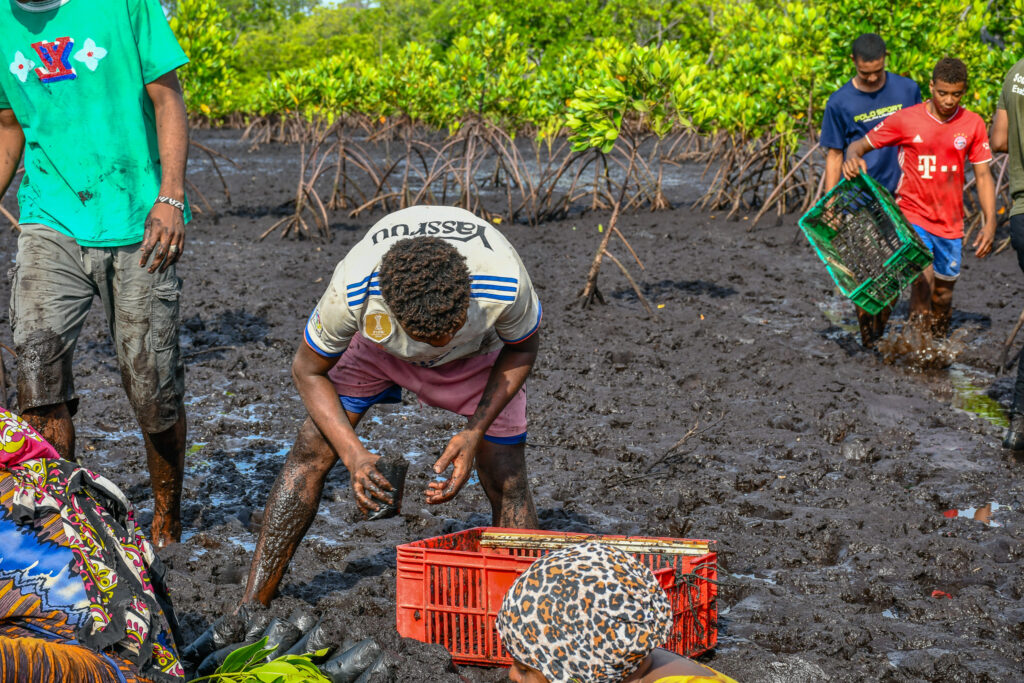
- Cost: The most significant hurdle is the higher cost. Each hapahapa pot costs Ksh. 15, three times more expensive than the Ksh. 5 per plastic bag. This substantial difference impacts the overall budget for the large-scale restoration.
- Time-intensive production: The entire process of producing hapahapa pots, from sourcing raw materials to the final weaving, is labor-intensive and time-consuming. This extended preparation period can potentially slow down the nursery’s output.
- Manpower Requirements: The weaving of these pots requires significant manpower, with local women primarily undertaking this intricate work. While this provides employment opportunities, it also means a higher reliance on available labor and potential bottlenecks in production if manpower is limited.
Long-Term Ecological Impact
The successful restoration of mangroves at Kwabaguo is poised to deliver a multitude of significant long-term ecological benefits, extending far beyond the immediate planting efforts:
- Biodiversity Enhancement: Mangrove forests are incredibly rich ecosystems, acting as nurseries for a wide array of marine life, including fish, crustaceans, and mollusks. As the restored mangroves mature, they will provide crucial habitats, breeding grounds, and feeding areas, leading to a substantial increase in local biodiversity. This, in turn, supports the health of adjacent ecosystems like coral reefs and seagrass beds.
- Coastal Protection: Mature mangroves form a natural barrier against coastal erosion, storm surges, and tsunamis. Their dense root systems stabilize shorelines, trap sediments, and dissipate wave energy, significantly protecting coastal communities and infrastructure from the impacts of climate change and extreme weather events. This natural defense reduces the need for expensive engineered solutions.
- Carbon Sequestration: Mangroves are exceptionally efficient at capturing and storing carbon, often referred to as “blue carbon” ecosystems. They sequester carbon at rates several times higher than terrestrial forests. The growing mangrove biomass at Kwabaguo will contribute to mitigating climate change by removing significant amounts of carbon dioxide from the atmosphere and storing it in their biomass and the underlying soil.
- Water Quality Improvement: Mangrove root systems filter pollutants and excess nutrients from terrestrial runoff before they reach the ocean. This natural filtration process improves water quality in coastal areas, benefiting marine organisms and human communities that rely on clean coastal waters for fishing and recreation.
- Fisheries Support: Healthy mangrove ecosystems directly support local fisheries by providing sheltered areas where juvenile fish can grow before moving to open waters. The increase in fish populations and other marine resources will enhance food security and economic opportunities for the local communities, fostering sustainable livelihoods.
- Soil Health and Sediment Stabilisation: The intricate root networks of mangroves help to stabilize coastal sediments, preventing their erosion and maintaining the integrity of the shoreline. This also prevents siltation of nearby coral reefs and seagrass beds, which are sensitive to increased turbidity.
- Restoration of Ecological Balance: Over time, the re-establishment of a healthy mangrove ecosystem will contribute to the overall ecological balance of the coastal zone, fostering a more resilient and self-sustaining environment that can better withstand future disturbances.
Conclusion and Outlook
The Kwabaguo mangrove restoration project by the Pate Resources and Tourism Initiative (PRATI) exemplifies a committed effort to rehabilitate degraded ecosystems while seeking innovative, sustainable solutions. The success in restoring 5,000 mangroves is a testament to their dedication and a clear vision for the future. The introduction of hapahapa pots, while presenting a more eco-friendly and effective propagation method, highlights the trade-offs often involved in sustainable practices namely, higher costs, increased labor, and longer production times.
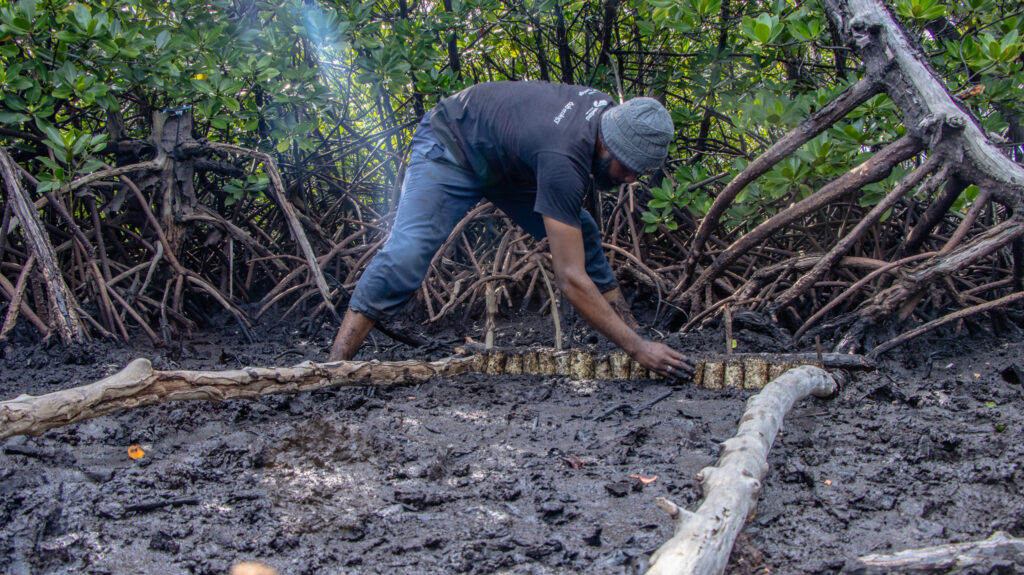
Future efforts will likely focus on mitigating these challenges through creative funding strategies, optimizing production efficiency, and strengthening community engagement. By addressing these practical considerations, PRATI can further solidify the long-term success of the Kwabaguo site, ensuring the continued ecological health and resilience of the mangrove ecosystem. The Kwabaguo site serves as an important lesson in balancing ecological benefits with practical and economic realities in conservation.

